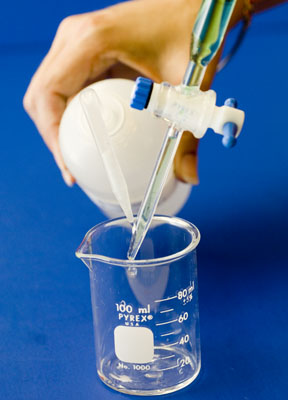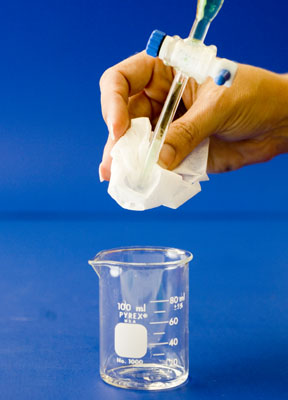|

Glassware

Burets

Flasks & Beakers

Pipets

Volumetric Flasks & Graduated Cylinders

Tools

Test Tubes

Instruments

Analytical Balance


pH Meter: Digital

Multimeter

Spectrometer: Digital
NEW* Denver pH Meters


Techniques

Flame Tests

Pipetting

Proper Weighing Technique

Titration

Vacuum Filtration

CHM1045 Lab Manual
 CHM1046 Lab Manual CHM1046 Lab Manual
 |
|

 |
 |
 |
 |
|
|
 |

A buret is used to deliver solution in precisely-measured, variable volumes.
Burets are used primarily for titration, to deliver one reactant until the precise
end point of the reaction is reached.

| |
|
|
|
 |
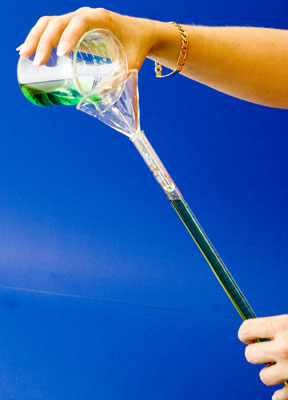 |
 |

To fill a buret, close the stopcock at the bottom and use a funnel. You may need
to lift up on the funnel slightly, to allow the solution to flow in freely.
 |
 |
 |
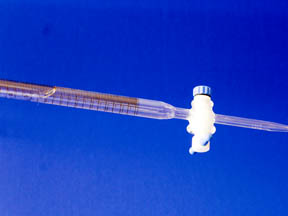 |
 |

Before titrating, condition the buret with titrant solution and check that the
buret is flowing freely. To condition a piece of glassware, rinse it so that
all surfaces are coated with solution, then drain. Conditioning two or three
times will insure that the concentration of titrant is not changed by a stray
drop of water.
 |
 |
 |
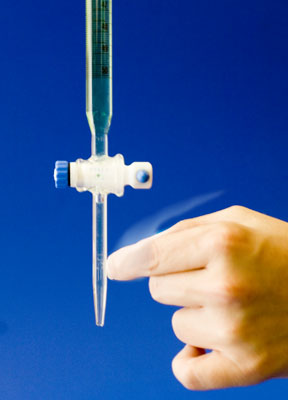 |
 |

Check the tip of the buret for an air bubble. To remove an air bubble, whack the
side of the buret tip while solution is flowing. If an air bubble is present
during a titration, volume readings may be in error.
 |
 |
 |
|
|

Rinse the tip of the buret with water from a wash bottle and dry it carefully.
After a minute, check for solution on the tip to see if your buret is leaking.
The tip should be clean and dry before you take an initial volume reading.

| |
 |
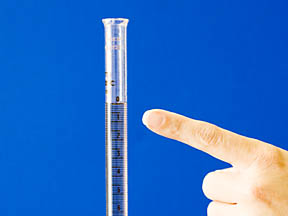
When your buret is conditioned and filled, with no air bubbles or leaks, take an
initial volume reading. A buret reading card with a black rectangle can help you
to take a more accurate reading. Read the bottom of the meniscus. Be sure your eye is at the level of meniscus, not above or below. Reading from an angle, rather than straight on, results in a parallax error. |
 |
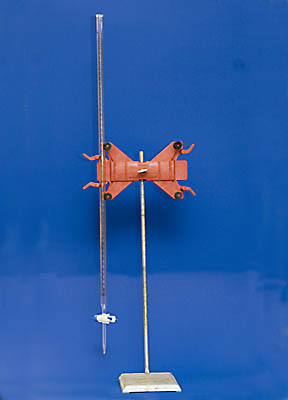 |
|
|
|
 |
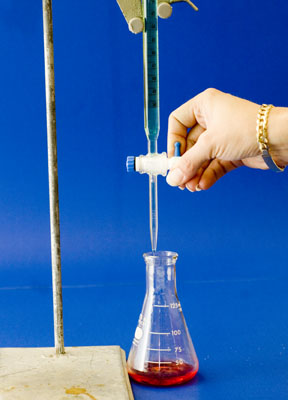 |
 |

Deliver solution to the titration flask by turning the stopcock. The solution
should be delivered quickly until a couple of mL from the endpoint.

The endpoint should be approached slowly, a drop at a time. Use a wash bottle to
rinse the tip of the buret and the sides of the flask. Your TA can show you how
to deliver a partial drop of solution, when near the endpoint.
 |
 |
 |
 |
For more information, see the techniques page on titration.
 |
|

![]()
![]()
![]()
![]()
![]()
![]()
![]()
![]()
![]()
![]()
![]()
![]()
![]()
![]()
![]()
![]()
![]()
![]()
![]()
![]()
![]()
![]() CHM1046 Lab Manual
CHM1046 Lab Manual ![]()




